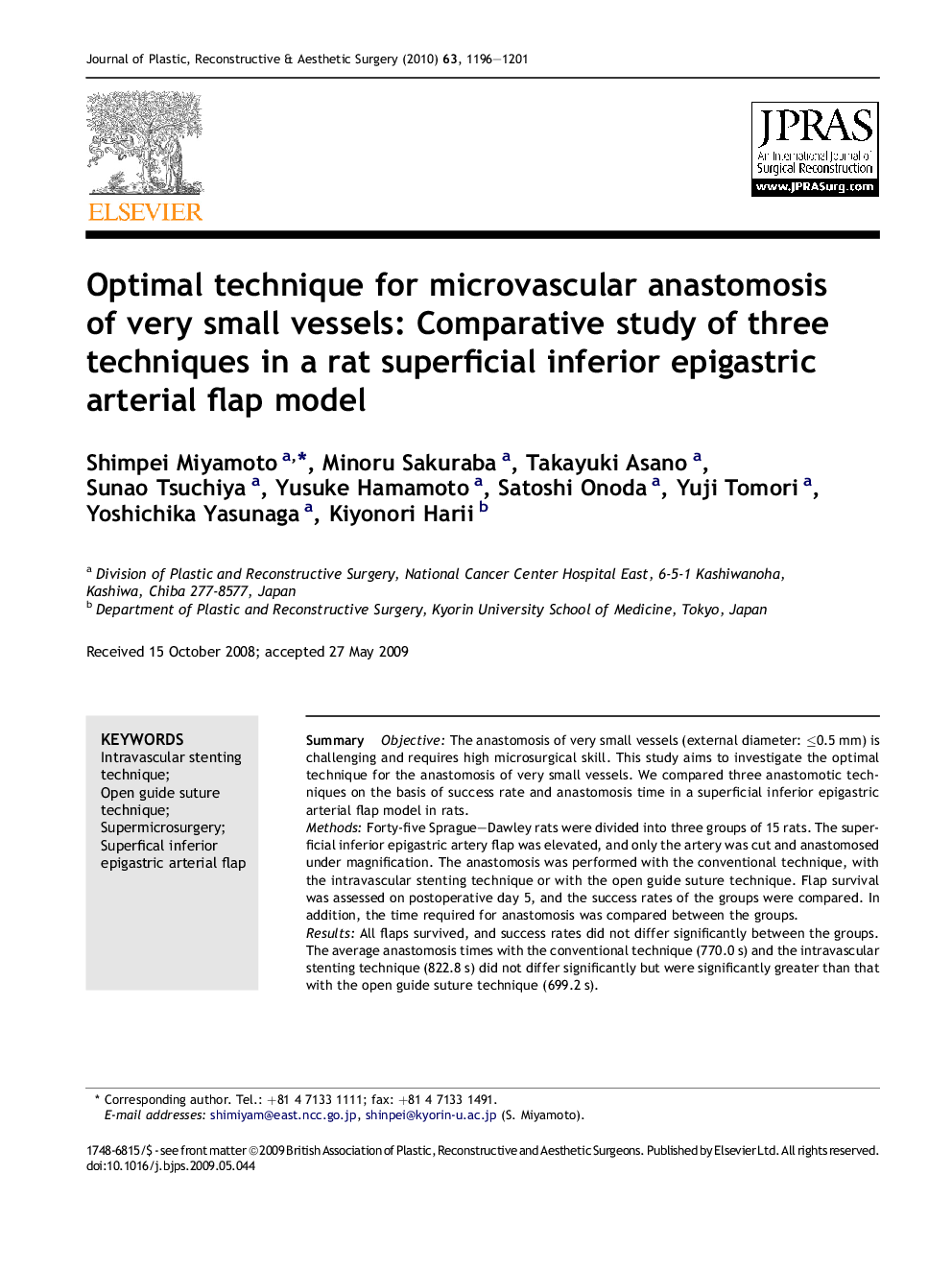| Article ID | Journal | Published Year | Pages | File Type |
|---|---|---|---|---|
| 4119822 | Journal of Plastic, Reconstructive & Aesthetic Surgery | 2010 | 6 Pages |
SummaryObjectiveThe anastomosis of very small vessels (external diameter: ≤0.5 mm) is challenging and requires high microsurgical skill. This study aims to investigate the optimal technique for the anastomosis of very small vessels. We compared three anastomotic techniques on the basis of success rate and anastomosis time in a superficial inferior epigastric arterial flap model in rats.MethodsForty-five Sprague–Dawley rats were divided into three groups of 15 rats. The superficial inferior epigastric artery flap was elevated, and only the artery was cut and anastomosed under magnification. The anastomosis was performed with the conventional technique, with the intravascular stenting technique or with the open guide suture technique. Flap survival was assessed on postoperative day 5, and the success rates of the groups were compared. In addition, the time required for anastomosis was compared between the groups.ResultsAll flaps survived, and success rates did not differ significantly between the groups. The average anastomosis times with the conventional technique (770.0 s) and the intravascular stenting technique (822.8 s) did not differ significantly but were significantly greater than that with the open guide suture technique (699.2 s).ConclusionThe open guide suture technique simplifies anastomosis and can be recommended as a new standard technique for the anastomosis of very small vessels. Furthermore, the benefit of the intravascular stenting technique is minimal for either skilled or unskilled microsurgeons.
